Ventilation in the bath: an overview of traditional schemes and nuances of arrangement
The temperature background and the high level of moisture in the bath are favorable conditions for the resettlement of all kinds of harmful microorganisms. Among them are bacteria, viruses, molds that destroy wood and the pulmonary system of bathhouse lovers. Properly made ventilation in the bath will save from the above negativity. How to make it?
We will tell you all about the rules for organizing ventilation systems designed to dry wet rooms. The use of reliable information will help to develop and implement a perfect ventilation project. The data presented for consideration are based on building codes and practical experience of builders.
The article describes in detail the methods of constructing ventilation systems intended for removing suspended water in the air, drying the finish and supporting structures. The materials and components required for their arrangement are described. Effective help in mastering a difficult topic will be provided by photo applications and video guides.
The content of the article:
The specifics of ventilation systems for the bath
The bathhouse needs regular air renewal. This is a safety requirement for people taking bath procedures. Also, proper ventilation can extend the life of up to 50 years or more.
The type of ventilation system is selected individually and depends on the location, size of the structure, and materials used in the construction.
Bath ventilation schemes
All existing ventilation systems according to the principle of action are divided into natural, forced and combined. In the first case, airing occurs due to the arbitrary intake of street air, its mixing in the room and the displacement of exhaust through holes in a natural way.
Secondly, an additional device, a fan, is included in the work. Most often, they put it on the hood, but it is possible on the inflow. A fan is used in each of the rooms of the bath. In the third - a symbiosis of the first and second options.
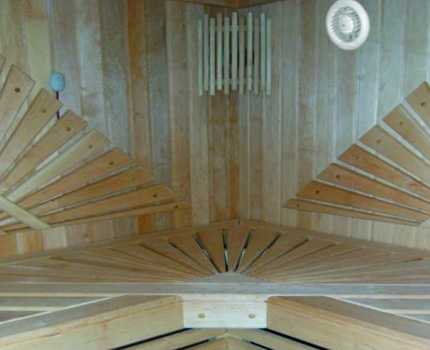
Among the ventilation schemes used in baths, the most popular bastu. It implies an inflow port with an adjustable valve, which is located behind / under the furnace. Additionally, under the furnace there may be vents controlled by a valve or a valve. Through them air enters from the underground, penetrating from the street through the ventilation in the foundation.
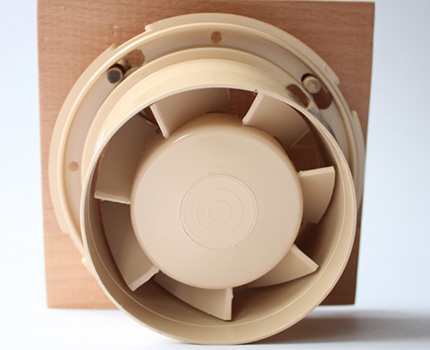
The top hole of this box is closed until the right time. As soon as there is a need to dry the room, immediately open 2 exhaust valves.
Such a seemingly ideal scheme is not always suitable. Then apply a forced ventilation option. If you add an exhaust fan to the lower part at the entrance to the ventilation duct in this circuit, you get an exhaust system. When installing the fan in the supply opening behind / above the furnace, we get the supply ventilation circuit of the steam room.
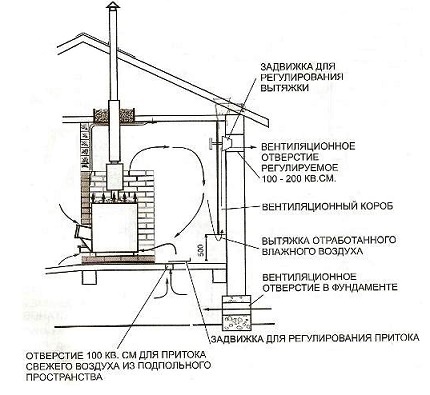
One more ventilation schemeused in baths, when the inflow occurs through vents located in the lower part of the room, near the floor, and removal - through the hole at the top with ventilation valves installed in them.
Outside, these holes are connected by a common ventilation duct, rising to a certain height. The height of the lower exhaust valve is about 50-60 cm from the floor, and the upper one is 30-40 from the ceiling.
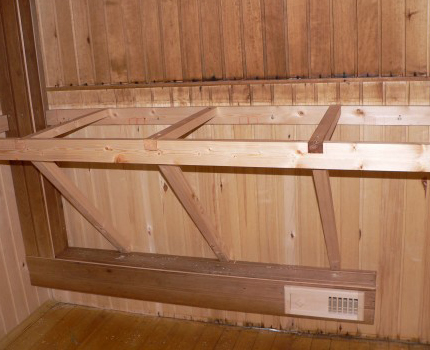
The ventilation scheme, in which one channel is used for the inflow and one for the removal of air masses, is also used in bathhouses. Moreover, these 2 holes are located at the same height from the floor.The first is behind the stove, and the second is on the opposite wall. It is imperative to install an exhaust fan here in order for the ventilation system to work.
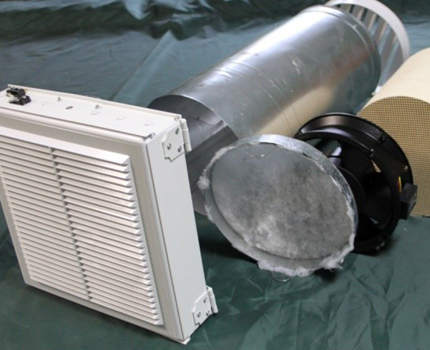
The most unfortunate option is when the supply and exhaust are arranged on the same wall, just opposite the stove. Unfortunately, such a picture is also not uncommon when other schemes can not be applied in any way in specific conditions.
With this scheme, fresh air, entering the room, is looking for a path to the furnace, simultaneously bumping into the feet of soaring. Then, being in the right place and warming up, it rises up, mixes with steam and flies out into the hole located 20-30 cm from the ceiling. He does not have time to fully work out, saturated to the extent necessary with carbon dioxide.
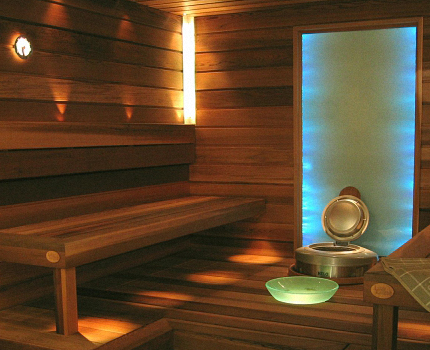
Structural components of the system
In the bathhouse, ventilation is necessary for the safety of people and ensuring acceptable operating conditions for the materials of the room itself. The development and arrangement of the ventilation system does not mean at all that a huge amount of money has to be spent on the implementation of useless projects.

High-quality ventilation, implemented in the bath, includes ventilation and drying:
- all premises;
- wall constructs;
- drying floors;
- ventilation of the attic and roof space.
As ventilation holes in the attic, special windows are made, soffits or aerators are installed - it all depends on the type of roof and materials. Drying of the roofing cake is provided by the device ventilation of the subroof space.
If there is insulation, then a counter-grill is required to ensure ventilation between the insulation and other layers of the roof. It is also used for ventilating wall structures so that condensation does not form in the thickness of the layers.
To dry the floors, use volley airing or equip a ventilated floor. This option should be provided at the construction stage. To do this, carry out a rough floor, carefully pour concrete at a slope, and finish the floor from hardwood boards, leaving small gaps between them. This floor provides a quick removal of excess moisture.
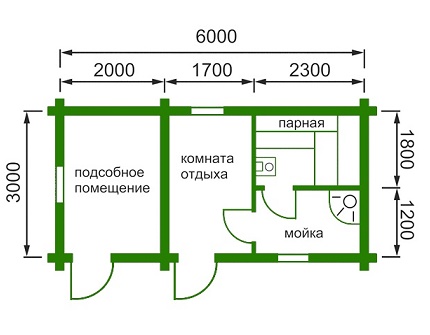
- steam room;
- washing;
- dressing room / lounge;
- other premises.
In order to arrange proper ventilation, it is necessary to choose the optimal scheme that is suitable for the requirements and conditions of a particular bath. It is important to remember that fresh air must enter all rooms and also be removed from all.
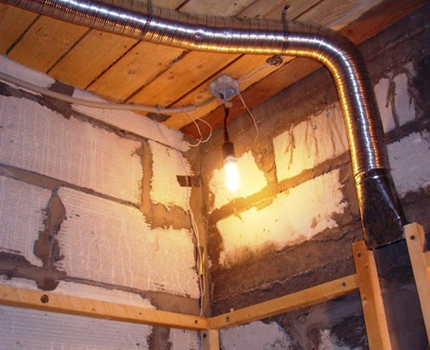
Experienced masters do not recommend laying complex ventilation duct systems, preferring to dwell on the simplest solution suitable for a particular case. The rule works here - the simpler the better. Yes, and for the price of a simple option will cost several times cheaper.
For owners of Finnish saunas and bath complexes with two or more types of steam rooms, including oriental boors, we recommend that you familiarize yourself with the specifics ventilation devices in the saunadescribed in detail in the proposed article.
The dependence of ventilation on the material of the walls of the bath
The ventilation system for the bath directly depends on the type of room itself and the material from which it was built. It can be a separate building or several rooms in a long-built house. The first option is preferable - it is convenient to plan and arrange a ventilation system here, choosing the most inexpensive way.
If the bath is adjacent to the premises, special attention should be paid to its drying, in order to protect the walls of the house from rotting. Also, do not forget that the temperature in the steam room will be high, so the adjacent walls need to be additionally made heat-resistant.
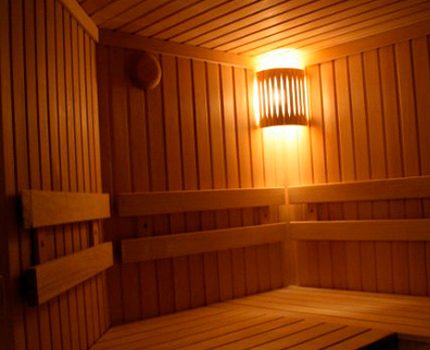
In this case, the ventilation system will only be forced. It must necessarily take into account the safety of walls and supporting structures of a residential building. The ventilation system of such a bath will be part of the entire house system. Ventilation ducts can be connected to common houses or go to the roof separately or through the wall to the street.
Depending on the type of bath material, there are:
- from a brick;
- logs;
- from gas blocks;
- timber;
- wooden frame with insulation.
In brick and frame baths, ventilation ducts can be arranged in the walls, leading them to the roof or higher. An air duct is laid for the inflow, a ventilation valve or vents in the foundation are used. It is imperative to install an exhaust fan to better remove exhaust air.
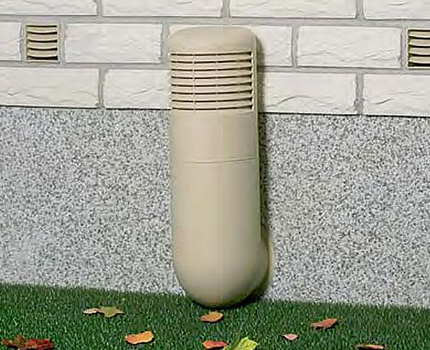
Due to the specifics of the material of the walls, gas-block baths are equipped with galvanized air ducts, buying finished pipes. Sometimes a ventilation duct is made of galvanized sheets, giving them the appropriate shape and securely sealing all joints. Ducts must pass over the wall.
If logs are used as material, then natural supply ventilation is possible due to the characteristics of wood and construction technology. When the tree breathes, there are necessary gaps between the logs, windows are provided in all rooms of the bathhouse, gaps are made from the floor to the bottom edge of the door of 2-3 cm, the construction of additional ventilation channels may not be necessary.
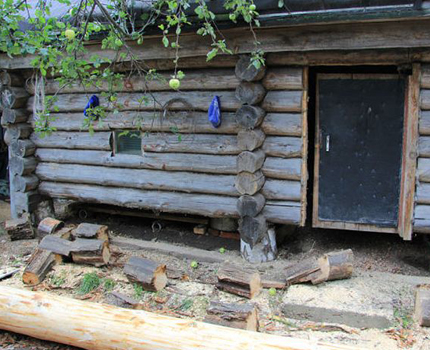
But it is very difficult to achieve the optimal ratio between the incoming air and the leaving steam. In order to avoid drafts and not to drown the entire street, it is often preferred to additionally insulate a wooden bathhouse by arranging inside openings with valves for air removal / intake.
Features of the ventilation system
A large role in choosing the optimal ventilation scheme is played by the material of the bath, its location, whether it is freestanding or not. All this helps to make the right decision when installing the sensor system.
One of the effective methods of ventilation is volley airing - when you need to quickly ventilate everything, all doors and windows open.Of course, this can be realized if there are windows.
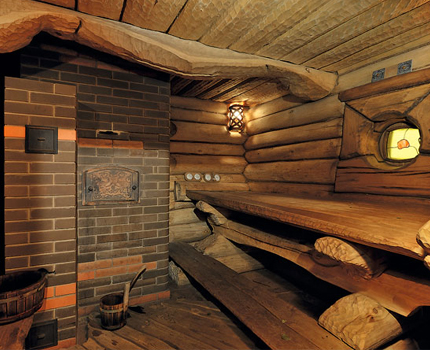
In the ventilation of the bath take part:
- window;
- vents in the foundation;
- special holes in the wall / ceiling;
- doors and the gap under them.
The solution with installing a window in the steam room is very good, another thing is that it is not always possible to implement it. It is in such cases that another option for organizing the ventilation of the room has to be selected.
Ventilation in the foundation is also not often possible to use. Especially if the owner decided to separate one of the rooms of the house under the steam room, the foundation of which is not equipped with special openings. Here comes to the rescue forced ventilation with a carefully selected layout of the supply and exhaust openings.
No matter how you want to protect the room from steam leakage, carefully covering it with vapor-tight materials and fitting the doors tightly, you should not do this. Under the door to the steam room, you should definitely leave a gap of 2-3 cm and nothing else.
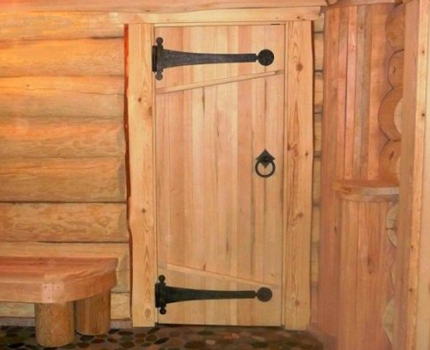
For the flow of air, it is advisable to make holes in the lower part of the room that communicate with the street. After all, the room needs clean and fresh air, especially if the bathhouse is located outside the city limits next to coniferous or deciduous forest.
Holes designed to remove exhaust air are located in the upper part of the walls opposite to the walls with supply valves. Moreover, their height depends on the selected ventilation scheme and starts from 80 cm from the floor level or more. It is also possible to install an exhaust valve in the ceiling with a vent duct on the roof.
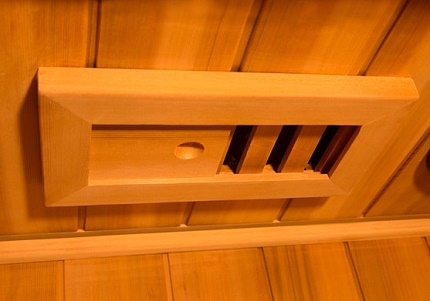
Ventilation components
To create favorable conditions in the steam room of the bathhouse and in all additional rooms, it is necessary to properly arrange the ventilation system. Otherwise, there can be no talk of any comfort.
The components used for the ventilation device are as follows:
- vent valve;
- gate valve;
- lattice;
- mosquito net / protective net;
- ventilation duct;
- galvanized or corrugated duct;
- fan;
- hygrometer, thermometer;
- metal adhesive tape, clamp, mounting foam, sealant, fasteners and other consumables for installation and design of inlet and outlet openings.
Ventilation valves for ventilation in the bath are placed on the supply and exhaust openings. They come in various sizes, shapes and materials. Therefore, it is not difficult to choose a valve that is perfect in color.
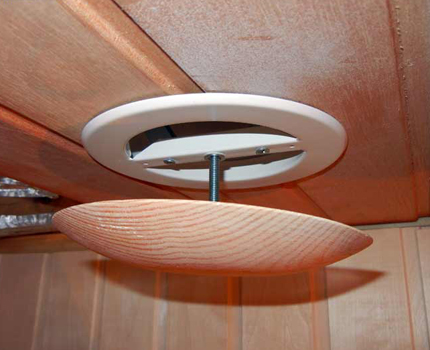
Gate valves are also available in various designs.They are needed to open / close openings if necessary. Often, home craftsmen make a home-made design, which copes with the function of removing / inflowing air masses from rooms no worse.
The grille and mesh are needed to protect the ventilation hole from getting into rodents, moths, mosquitoes and other animals. Lattices are selected from wood, heat-resistant plastic, and the mesh is most often made of metal.
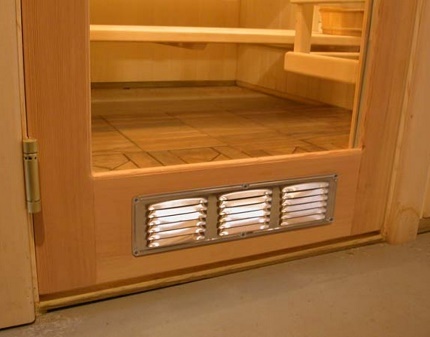
A ventilation duct is installed in a wall niche or, if conditions do not allow, are laid over, for example, if aerated concrete is used as the wall material. The box can be made from improvised materials or used as a duct corrugation or galvanized pipe. Plastic analogues for the steam room will not work - you need to take into account the temperature to which the room will heat up.
The fan in the bath is used both for inflow and for exhaust. Its use is considered optimal only in one of the areas - for the inflow or removal of air masses.
You need to buy a heat-resistant device specially designed for baths and saunas with IP 44 and above. Do not forget about the specifics of the room - there is a lot of steam and high temperature.
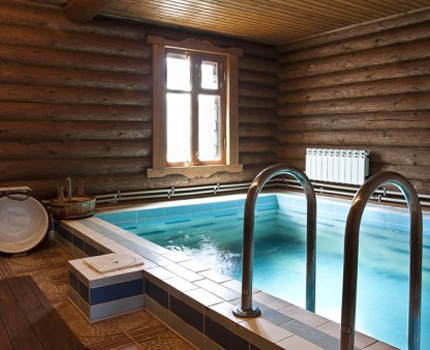
Consumables are used during installation for mounting ducts, arranging ventilation ducts and installing valves, fans. A hygrometer and a thermometer are needed to effectively use the ventilation system.
If mechanical ventilation using climate technology is arranged, then there is a built-in temperature sensor and a humidity level controller. Based on the real indicators of the devices, the system starts the exhaust fan or opens the supply valve.
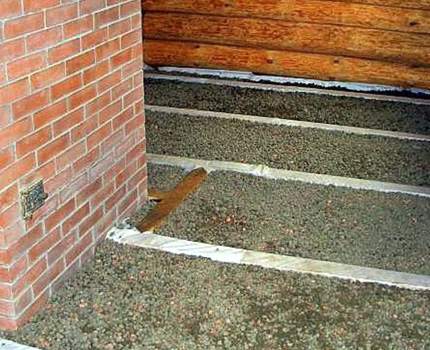
Properly equipped ventilation will ensure a comfortable stay in all rooms of the bathhouse, not clouded by third-party odors and drops of water flowing down the walls and falling from the ceiling behind the curtain.
Another important condition for a long service life is timely and complete drying after use. It depends on the implementation of this paragraph how long the bath will last and whether it will be necessary to replace rotten boards with new ones in the next 3-5 years.

Conclusions and useful video on the topic
Effective schemes for organizing ventilation in the steam room:
Variants of the ventilation device in the new bath:
In a separate bathhouse, ventilation of all internal rooms and the attic is realized.There are also vents in the foundation, and a fan is used to improve air exchange between the steam room and the relaxation room - all this can be seen in the video:
The lack of ventilation channels in the bath can turn into costly troubles:
For the rational and long-term use of the bath, it is important to properly equip the ventilation system. It is necessary to choose the most acceptable option, suitable for specific conditions, capable of providing an influx of fresh air and removing exhaust air in the required volume. If in an idle bath it’s dry, but in a warm bath it’s comfortable and does not drip on your head, then we managed to cope with the ventilation task perfectly.
Do you have any questions while reviewing the information provided? Do you want to talk about the nuances of organizing ventilation in a bathhouse known only to you? Please write comments in the block below, post thematic photos, share your impressions.

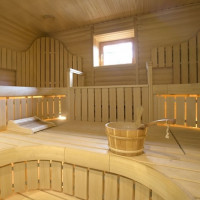 Ventilation in the steam room: examples of proven schemes and analysis of the rules of arrangement
Ventilation in the steam room: examples of proven schemes and analysis of the rules of arrangement 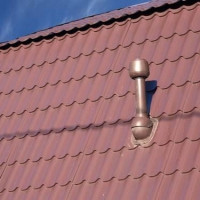 Roof ventilation for metal: an overview of options and nuances of arrangement
Roof ventilation for metal: an overview of options and nuances of arrangement 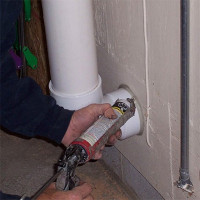 DIY ventilation in the apartment: an overview of the nuances of arranging the ventilation system
DIY ventilation in the apartment: an overview of the nuances of arranging the ventilation system 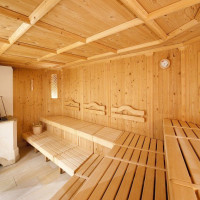 Ventilation of the bastu in the bath: advantages and disadvantages + instructions for the arrangement
Ventilation of the bastu in the bath: advantages and disadvantages + instructions for the arrangement  Basement ventilation in a private house: the best ways to arrange proper air exchange
Basement ventilation in a private house: the best ways to arrange proper air exchange  Inspection pit ventilation in a garage: specifics of arranging an air exchange system
Inspection pit ventilation in a garage: specifics of arranging an air exchange system  How much does it cost to connect gas to a private house: the price of organizing gas supply
How much does it cost to connect gas to a private house: the price of organizing gas supply  The best washing machines with dryer: model rating and customer tips
The best washing machines with dryer: model rating and customer tips  What is the color temperature of light and the nuances of choosing the temperature of the lamps to suit your needs
What is the color temperature of light and the nuances of choosing the temperature of the lamps to suit your needs  Replacement of a geyser in an apartment: replacement paperwork + basic norms and requirements
Replacement of a geyser in an apartment: replacement paperwork + basic norms and requirements
Correct installation of the ventilation system in the bath is the guarantee that it will help the structures last longer and create a suitable microclimate for the procedures. Of course, a natural system is the cheapest option, but it will not provide sufficient air circulation in the room. I think that it is absolutely necessary to install a fan. Especially now their huge choice, you can find completely silent, you will not even pay attention to them. And of course, do not forget to ventilate all the rooms of the bath, regardless of the presence or absence of a fan.
We have our own land in the country. Two years ago they built a bathhouse on their own. Consulted with specialists. The design of the bath was thought out very carefully, especially the ventilation system. While we can say that they coped with their task “perfectly”. Steam in the bath is quite comfortable. Neither mold nor fungus grow. We maintain the state at the proper level.